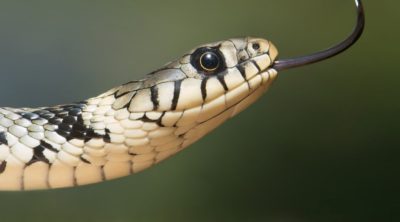
As kids, we have all feared the monsters under our beds or the ones peeking through the window, or have just been so mesmerized by some creatures that we wanted to be like them. Mysticurious, in this article, revisits those lost memories of your childhood by listing out the ten most famous humanoid creatures.
Popular On-screen Humanoids!
Shrek the ogre, Beast from Beauty and the Beast, Werewolf, Peter Pan, and Mermaid are testament to man’s fascination with mythical humanoid creatures. These humanoids, and a few more which have been mentioned below, captured the public’s imagination and made it big on the silver screen.
Man has forever been afraid of the unknown dangers that may lurk in the dark of the night. According to various legends, many creatures try to trick, deceive, or hunt humans.
Furthermore, no matter where you go, you’ll always get to hear legends of some mysterious beings. But the truth is, any incident that doesn’t seem to have any logical explanation is said to be the work of supernatural beings.
Humanoids are mythical creatures that are part human, or resemble the human form, or are capable of taking the human form. There are hundreds of folklore describing these creatures. Some creatures are helpful, while some are mischievous. Some of them are shape-shifting, while some use mystical powers to allure their victims to their deaths. Stay put, while we tell you the stories of some of most famous humanoids.
Cyclops
The name cyclops translates to “round-eyed” or “circle-eyed”. According to legends, this creature is of a primitive race of giants with only a single eye in the middle of its forehead. The origins of this creature can be found in Ancient Greek or Roman mythology. The most famous cyclopes in Greek mythology is Polyphemus, who was described to be a man-eater. These creatures are said to be the children of the Titans Uranus and Gaea.
Gnomes
The first mention of gnomes was in the 16th century by noted Swiss German astrologer and occultist Paracelsus. The character he first mentioned later underwent many modifications by different story tellers but the central idea remains the same. Gnomes are mystical spirit of small stature that dwell underground. These humanoid creatures can move through the soil as easily as humans can move on land. Their nature has been described as shy and reclusive. They avoid humans and are said to guard mines and underground treasures.
Ghoul
These are Arabian mythological beings that can be described evil spirits or monsters that roam in graveyards in the dark of the night to consume putrefying human flesh. The earliest mention of these creatures can be found in the classic Arabian folklore of One Thousand and One Nights. They are said to roam the deserts devouring dead bodies, lost souls, and children. They are shape-shifting and can don the appearance of the person they have recently eaten.
Trolls
These are supernatural beings that dwell in caves in the rocky mountainous regions. Although stories about them vary, they are usually described as slow-witted, grotesque-looking, and not very helpful. Some Norse folklore describe them to live together as a family. Scandinavian folklore describes these beings to be extremely strong and very old; at times, they are described to be man-eaters and even kidnap people. According to legends, humanoids turn to stone upon contact with sunlight.
Mermaids
Legends of these mysterious maidens of the sea have been widespread from Europe to Asia to Africa. They are usually described to be beautiful with long flowing hair, but with a lower body like the tail of a fish. Some stories describe them as benevolent or falling in love with sailors at sea, other folklore describe them to be perilous with a mesmerizing voice, alluring sailors and causing shipwrecks.
Vampires
Vampires are one of the most popular humanoids that are believed to feed on the blood of living organisms. Believe it or not, these beings were described as dark and bloated until they took a lean-mean, pale, and sexy turn in the early 18th century. Legends of these beings can be found the world over. The popularity of this creature can be attributed to Bram Stoker’s suave depiction of Count Dracula who is still the most popular vampire character.
Nymph
According to Greek or Latin mythology, nymphs are divine spirits of a particular body of land or water. They usually take the form of beautiful young women, often found singing and dancing in the woods. They weren’t immortal but could be killed only in certain ways. Many Greek folklore describe them to be mischievous.
Yeti
An ape-like humanoid believed to be inhabiting the Himalayan mountain ranges. the Yeti is described as a hairy creature that is larger than an average human. Sightings of this creature have been reported by many locals, and various explorers and scientist have tried to discover the truth behind this mysterious snowman. Till date, no conclusive evidence of its existence has been found, and until then, it will remain a mythical creature.
Goblin
The first description of goblins or dwarf-like evil monsters cropped up all over Europe in the Middle Ages (around the 14th century). Their attributes changed from place to place, but they were very commonly described as beings of short stature possessing magical abilities. They are depicted as extremely cunning and greedy for gold and jewels.
Fairies
These are legendary mystical beings that are, according to European folklore, supernatural spirits. The descriptions for these humanoids vary and some describe them as angelic beings, whereas some say they are wizened trolls. Some folklore even describe them as winged creatures. Today, the terms fairies and pixies can be used interchangeably. Their nature is described by some stories as kind and benevolent, whereas some descriptions describe them to be mischievous.
These were just a few of the various humanoid creatures that have prowled our memories and imagination for ages. We’ve grown-up either mesmerized or frightened by them.










